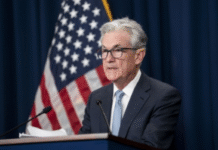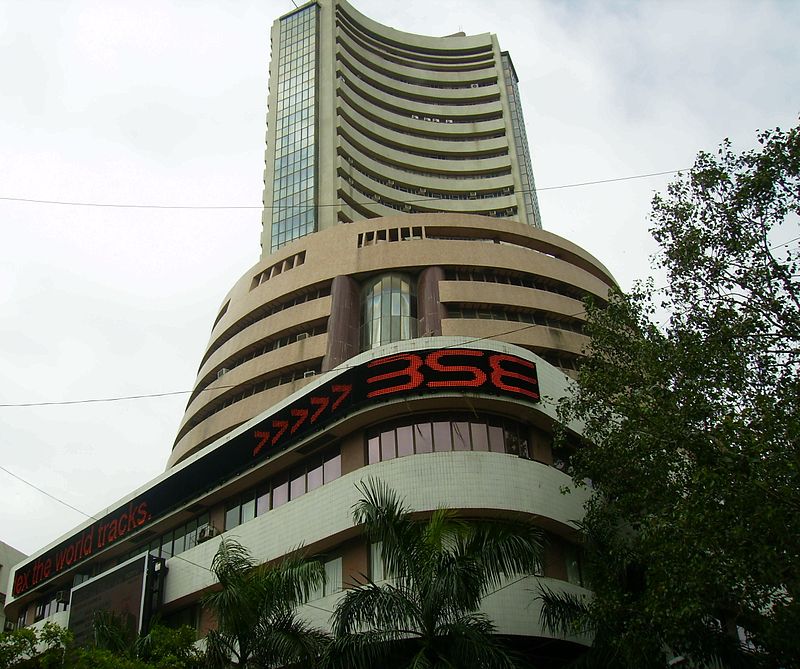New Delhi– India’s annual rate of inflation based on wholesale prices eased to 3.57 per cent in September from a two-year high of 3.74 per cent in August, official data showed on Friday.
The annual wholesale inflation during the corresponding period last year stood at (-)4.59 per cent.
After rising for the first time in April following 17 straight months of contraction, the WPI (Wholesale Price Index) has cumulatively risen by 4.28 per cent in the current fiscal up to September.
However, food articles inflation last month increased by 5.75 per cent on year-on-year (YoY) basis. On a sequential basis, it was lower than August’s 8.23 per cent rise.
Nonetheless, the annual rate of inflation for some commodities remained rather high on a YoY basis: Potatoes (73.31 per cent), pulses (23.99 per cent) and fruits (14.10 per cent).
Protein-based food items such as eggs, meat and fish became dearer by 7.44 per cent. Besides, wheat became more expensive by 7.01 per cent.
However, onion prices were down (-)70.52 per cent in September this year, against the like month of the previous year. Overall vegetable prices came down by (-)10.91 per cent.
The expenses on primary articles which constitute 20.12 per cent of the WPI’s total weight rose by 4.76 per cent.
Prices of manufactured products, which comprise nearly 65 per cent of the index, continued to rise for the sixth straight month, rising by 2.48 per cent in September. The prices rose by 2.42 per cent in August.
The sub-category of manufactured food products, which includes sugar and edible oils, registered a rise of 11.21 per cent.
This was mainly caused by a spurt in sugar prices, which rose by 32.92 per cent, as a result of production shortages. The cost of edible oils rose by 5.87 per cent.
On the other hand, fuel inflation accelerated in September. It edged up by 5.58 per cent as compared to a 1.62 per cent rise in August and (-)1.00 per cent in July.
Diesel prices continued to rise after seeing an uptrend which started in June after many months of consecutive fall. Prices of high-speed diesel rose by 19.08 per cent last month.
Gasoline or petrol prices inched up by 1.25 per cent, while the LPG cost declined by (-)1.30 per cent.
The WPI data released by the Commerce and Industry Ministry also revealed the revised inflation figures for July. The final WPI-based inflation for “All Commodities” stood at 3.72 per cent as compared to 3.55 percent (provisional) which was released in August.
The WPI figures came a day after data on India’s annual retail inflation showed a decline of 4.31 per cent from 5.05 per cent in August and 4.41 per cent reported during the corresponding period of last year.
The CPI (Consumer Price Index) data released by the Central Statistics Office (CSO), showed the fall in retail inflation was due to a rather sharp drop in the annual food inflation — from 5.91 per cent in August to 3.88 per cent in September.
The September annual retail inflation came below the upper tolerance level of six per cent for the second straight month, even though it is still above the base rate of four per cent.
The government target is four per cent plus-or-minus two percentage points for the next five years.
India Inc, on its part, said that inflation numbers released this week have shown a softening trend in food prices.
“Good monsoon and government action have helped in abating the price level and various assessments indicate prices to remain benign,” said Harshavardhan Neotia, President, Ficci.
“The accommodative stance undertaken by RBI in monetary policy announced earlier this month is in sync with these developments.”
According to Chandrajit Banerjee, Director General, CII, the anti-inflationary supply side measures of the government have been successful and that rising inflation has been brought under control.
“In this context, the RBI governor needs to be congratulated for lowering rates in anticipation of a benign inflationary outlook,” Banerjee said.







